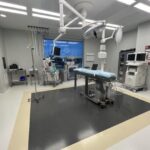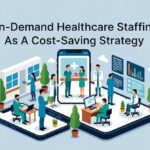Healthcare delivery is evolving to meet the increasing demands of patient care. One emerging effective model is the collaboration between physicians and nurse practitioners (NPs). This team-based approach can significantly improve patient outcomes, streamline workflows, and alleviate some of the systemic pressures in healthcare. In this article, we will explore this collaborative practice’s dynamics, advantages, and implementation strategies.
Defining the Roles
Physicians
Physicians are medical doctors who have undergone extensive training and education. They diagnose illnesses, prescribe medications, and perform surgeries. Typically, their training includes a four-year undergraduate degree, four years of medical school, and several years of residency.
Nurse Practitioners
Nurse Practitioners, on the other hand, are advanced practice registered nurses who have received graduate-level education (Master’s or Doctoral) in nursing. They are qualified to diagnose and treat medical conditions, prescribe medications, and perform certain procedures. NPs often focus on a holistic approach to patient care.
Benefits of Collaboration
Improved Patient Outcomes
When physicians and NPs work together, the comprehensive care model can lead to better patient outcomes. The diverse expertise of these healthcare providers ensures a more thorough diagnosis and treatment plan.
Key Benefits:
– Holistic Care: Combines medical and nursing perspectives.
– Reduced Wait Times: More providers mean quicker access to care.
– Increased Patient Satisfaction: Collaborative care often leads to higher satisfaction rates.
Enhanced Workflow
Collaborative practices can streamline operations, making healthcare delivery more efficient.
Advantages:
– Shared Responsibilities: Distributes the workload, reducing burnout.
– Efficient Task Management: Clear role definition minimizes redundancy.
– Coordinated Care Plans: Provides a unified approach to patient management.
Implementing Collaborative Practice
Communication Strategies
Effective communication is the cornerstone of a successful collaborative practice. Regular meetings and shared documentation systems can facilitate better interaction between team members.
Tips:
– Regular Team Meetings: Helps in discussing patient cases and care strategies.
– Shared EMR Systems: Electronic Medical Records (EMR) can be accessed by all team members.
– Feedback Mechanisms: Anonymous surveys or feedback forms can help in continuous improvement.
Training and Education
Continued education and training are vital for physicians and NPs in a collaborative practice. Joint training sessions can bridge potential knowledge gaps and enhance understanding of each other’s roles.
Best Practices:
– CME Programs: Continuing Medical Education programs for both parties.
– Workshops and Seminars: Regular training on new medical practices and technologies.
– Cross-Training: Understanding each other’s responsibilities enhances collaboration.
Real-World Examples
Example 1: Rural Healthcare Clinics
In many rural areas, healthcare facilities benefit significantly from a collaborative practice model. A rural clinic might have one physician and several NPs who manage the bulk of patient care. This not only increases access to medical services but also ensures comprehensive patient management.
Example 2: Urban Hospitals
In urban settings, busy hospitals often adopt collaborative practice to manage high patient volumes. Physicians may focus on complex cases while NPs handle routine examinations and follow-ups, thereby ensuring that patients receive timely care.
Key Considerations
Regulatory Compliance
It is essential to adhere to the regulations governing the scope of practice for NPs, which can vary by state. Both parties should be well-versed with these rules to ensure compliance.
Quality Assurance
Regular audits and performance reviews can help maintain high standards of care in a collaborative practice setting.
Key Areas:
– Patient Care Audits: Regular evaluations of patient care records.
– Peer Reviews: Encouraging peer evaluations to maintain quality.
– Continuous Improvement Programs: Ongoing efforts to improve care delivery.
To summarize, the collaborative practice model, including the role of a collaborating physician, holds promise for improving patient care, streamlining workflows, and enhancing the overall efficiency of healthcare delivery. With appropriate implementation, training, and communication strategies, this model can significantly benefit both healthcare providers and patients.
By integrating diverse medical expertise and nursing care, this team-based approach offers a robust solution to the challenges facing modern healthcare.
Did you find this helpful? Check out our other helpful articles on our website.
Read Also
- Compounding Pharmacy: Personalized Medication SolutionsA compounding pharmacy plays a vital role in modern healthcare by providing customized medications tailored to the specific needs of individual patients. Unlike mass-produced drugs manufactured by pharmaceutical companies, compounded medications are prepared by licensed pharmacists who carefully combine, adjust, or modify ingredients to create a formulation that best suits a patient’s unique medical requirements.… Read more: Compounding Pharmacy: Personalized Medication Solutions
- The Best Business Decision a Surgeon Ever Made: Ordering a Medical Equipment AppraisalMost surgeons don’t go into medicine because they love spreadsheets, valuations, or negotiating buy-ins. They go into medicine because they want to operate, treat patients, and build something meaningful over time. For one surgeon, that mindset worked perfectly, until the day another surgeon decided to buy into his practice. That moment exposed a problem he… Read more: The Best Business Decision a Surgeon Ever Made: Ordering a Medical Equipment Appraisal
- Creative Approaches to Alleviating Healthcare Staff ShortagesHospitals and clinics are facing staff shortages, which makes it harder to take care of patients well. Finding simple and useful solutions is very important. Easy changes like flexible work hours, good training, and chances to grow can help staff stay happy. Technology, like online doctor visits and helpful tools, can make work easier. Smart… Read more: Creative Approaches to Alleviating Healthcare Staff Shortages
- Understanding the Role of Sterilizers in Healthcare FacilitiesHave you ever wondered how hospitals keep their equipment safe enough to use on dozens of patients every day? Most people never think about what happens behind the scenes, yet these hidden steps play a huge role in patient safety. Sterilizers are part of that system, working quietly to remove harmful germs before any instrument… Read more: Understanding the Role of Sterilizers in Healthcare Facilities
- Building Healthcare Access Where It’s Needed Most: A Local First ApproachHealthcare shouldn’t depend on where you live. But in the U.S., it often does. If you’re in a big city, you likely have options. If you’re in a small town or an underserved neighbourhood, it’s a different story. To fix this, more healthcare leaders are turning to a local-first approach. That means putting clinics and… Read more: Building Healthcare Access Where It’s Needed Most: A Local First Approach
- Revolutionizing Patient Engagement: Innovative Solutions for Improved Care and Treatment SuccessNavigating healthcare system can often feel overwhelming for patients. Between appointments, prescriptions, and treatment regimens, it’s easy for crucial details to get lost in the shuffle. That’s why effective patient engagement and support solutions are more important than ever. Companies like Serva Health, with their pharma hub services, are stepping up to ensure that patients… Read more: Revolutionizing Patient Engagement: Innovative Solutions for Improved Care and Treatment Success
- On-Demand Healthcare Staffing As A Cost-Saving StrategyThis is an exciting and challenging time for the healthcare industry. Technology is advancing almost faster than humans can keep pace. New legislation is creating fresh challenges for the future of healthcare, and the shifting population demographic continues to place more pressure on healthcare facilities. Amidst these changes, healthcare facilities are facing a critical staffing… Read more: On-Demand Healthcare Staffing As A Cost-Saving Strategy
- The Benefits of Contract Labor Staffing in HealthcareThe most successful healthcare facilities today aren’t just reacting to crises—they are building workforce resilience to withstand them. Unpredictable patient demand, coupled with persistent nursing shortages, has made the traditional staffing model obsolete. Relying on mandatory overtime to cover a sudden surge in capacity is a recipe for high turnover and rising employee burnout relief… Read more: The Benefits of Contract Labor Staffing in Healthcare









